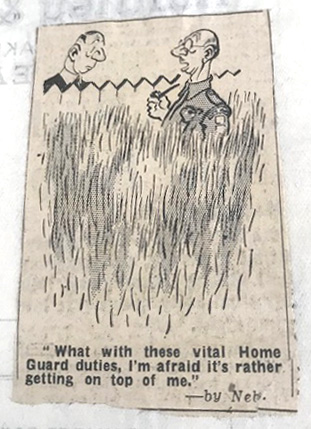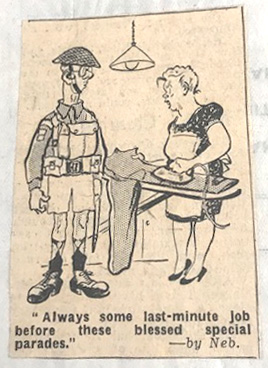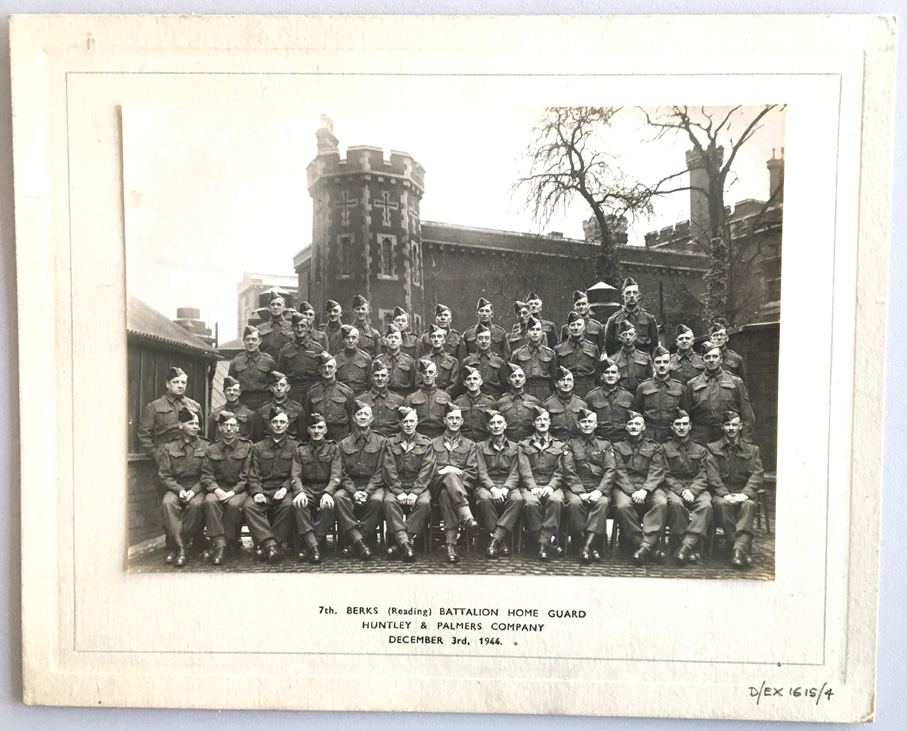By Spring 1940, the threat of German invasion was growing. In Berkshire as elsewhere, plans were made to defend towns and villages from any potential attack.
On 14 May 1940, War Secretary Sir Anthony Eden announced the formation of the Local Defence Volunteers. Later known as the Home Guard, these units were open to men above or below the age of conscription (18 and 41) and those unfit for the front line.
The response to the call out was overwhelming. Initially, the Home Guard’s training was stretched and limited to rudimentary equipment. However, over time the Home Guard developed into a resourceful and equipped force.
The image below shows the register and accounts of Theale Home Guard, 1940-1941, and lists the types of equipment purchased such as grenades, wire and gum boots.

Register of Home Guard equipment, 1940-1941, D/P132B/28/5
Women were not permitted to enrol in the Home Guard. The Auxiliary Territorial Service (ATS) was created in September 1938 as the women’s branch of the British Army.
The photograph below shows the 40th Berkshire ATS parade in Blagrave Street, Reading. It was taken for the Reading Mercury in July 1939. During the course of the war the range of duties carried out by the ATS expanded from traditional female roles such as cooks, clerks and storekeepers to messengers, drivers and mechanical workers.

Photograph of ATS parade in Blagrave Street, Reading, July 1939, D/EX831/1
Many buildings were subject to changes of use to support the War effort. Between 1941 and 1945 Coronation Hall, Inkpen Road, Kintbury was requisitioned for the use of the ARP department as a Warden’s Post, an Upgraded First Aid Point, a Rest Centre and later for Home Guard lectures.
The hall also acted as a social space for the Home Guard who organised weekly dances for American servicemen and the public.
Changes of use did not come without risk. This letter to Hungerford Rural District Council, 5 January 1945, identified 56 dances that took place in the hall between July 1943-July 1944. These caused considerable damage including smashed gates, stolen equipment and broken furniture.

Copy letter from J F Killick to the Hungerford Rural District Council regarding the use of Kintbury Hall, C/CD/A1/27
Huntley and Palmers Home Guard Association: Community spirit
Factory buildings often had dedicated defences. Many, including the Huntley and Palmers biscuit factory, Reading, had their own Home Guard units.
The Huntley and Palmers Home Guard Association had a regular programme of activities, including parades, lectures, firing courses, weekend camps and weapon instruction training. The serious nature of these activities reflected the belief that an invasion would be most likely in south east England.

Annual dinner menus of the Huntley and Palmers Home Guard Association, D/EX1615/3 
Typescript notes on the Huntley and Palmers Home Guard, 1944, D/EX1615/5/6
Huntley and Palmer material, D/EX1615
This contrasts with the popular perception of the Home Guard as ‘Dad’s Army’, as illustrated by the contemporary newspaper cartoons in the gallery below. They were kept within the papers of the Huntley and Palmers Home Guard Association. The envelope reads: “for lighter moments”.
Newspaper cartoons, D/EX1615/5
The image below shows the Huntley and Palmers Home Guard unit in front of Reading Prison in December 1944. They did not all work at the factory, but all remained home as what we would now call ‘keyworkers’.
D/EX1615/4
Second left on the second row down is Leslie Chandler. Leslie worked as a bus driver for Reading Corporation, the predecessor of today’s borough council. Leslie continued working for the council after the war and retired in 1967, spending the rest of his life in Crowthorne.
FOLLOW THROUGH TO
‘VE DAY‘







